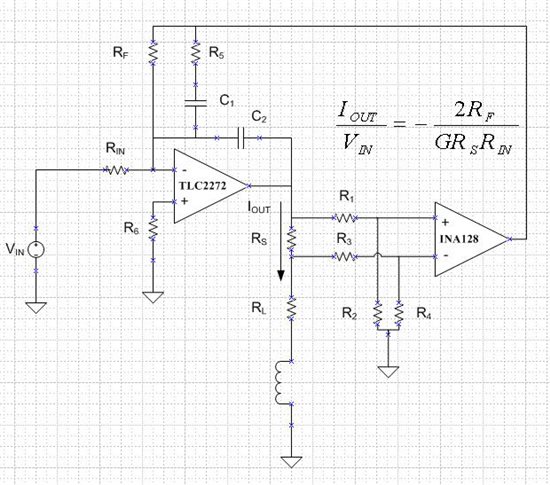*EDIT* Sadly I just realized that the TLC2272 (while listed on TI's cross reference sheet as the replacement for AD822) is not a replacement in all aopplications. It's max supply voltage is only half of the AD822. Probably why the model simulation is failing.
Hi, I have a conceptual Voltage to Current amplifier shown below. The generalized DC transfer function is also shown. It does not account for the current loss in the divide down resistors of the INA128 inputs. The resistors are used to keep the common mode input low for higher current drive. I have a few question, a couple are just to ensure I understand the operation of this circuit.
INA128 is set for a gain of 1. Both amps are driven by +/-15V supply (not depicted). Rin and Rs are 10k and 100 ohms respectively. R1-R4 are equal. Vin is set to 1V. The gain equation, again not accouting the loss in the R1-R4 network does work for positive input voltages with a feedback resistor upto about 5k. The equation implies that 6k feedback resistor would give about 12mA of output but I think the negative rail is limited at the higher current drive.
The real confusion stems from making the input voltage negative. The opamp doesn't seem to respond properly and I don't understand why. The output doesn't agree with the gain equation at all. Cadence Orcad gives the same results. However, if I replace the TLC2272A with the LM741 or uA741 it works just fine for any input voltage. Is there something I am missing with this model? Also is this op-amp not capable of driving a 1k load with 12mA? Am I hitting the maximum negative output voltage of the amp? If so is there a recommended replacement that gives a more dynamic output range but keeps the excellent offset and input bias specs this amp has? I am working in the -55 to 125 temp range as well.
Thanks for any help that can be provided


